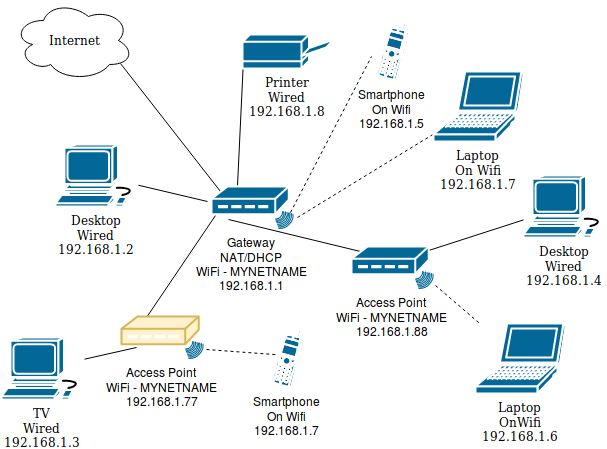What Is a Wireless Access Point?

A wireless access point, commonly called just access point (AP), is a networking device that allows easy access to the Internet over the air. Most access points look very similar to routers. In fact, modern routers can usually function as access points. Internet Service Providers typically give their customers a router with the functionality of an access point to make the set up simpler.
A wireless access point, on the other hand, is a wireless point you connect your devices to which then further connects you to the main network. Wireless access points are usually used to extend the range of the main network so more people can join the network. Connecting to a wireless access point in Windows 10 is almost the same as on Windows 7. From your desktop, click on the wireless icon on the right-side of your task bar: then a window will open with all the wireless access points around you. Remote access points Work from home or set up a temporary site with a solution that’s easy to deploy and manage. Aruba access points are automatically configured, so employees just plug them into any existing Internet connection and they’re ready to go. The Wireless Access Point (WAP) is a networking devices that enables the capability for wireless-capable devices to connect to a wired network. Introducing a WAP to your existing wired network is instrumental to accommodating those devices only capable of wireless connection.

If they gave them a router without the access point functionality, the customers would have to connect a dedicated access point to the router to enjoy wireless Internet access, which would be highly inconvenient and beyond the expertise of most home users.

Best Home Wifi Access Point
The term wireless access point is often confused with the term hotspot. A wireless access point covers an area with a WiFi signal, and the area in which one can connect to the Internet over the air is called hotspot.
Before WiFi networks, it was quite problematic to connect new devices to the Internet because each new device had to be connected with a wire to an Internet-connected router. Of course, students or office workers seldom carried their own personal electronic devices, so the situation wasn’t nearly as bleak as it would be today if we didn’t have wireless access points.
Connect To Wireless Access Points
After the explosion of the smartphone market, fast, ubiquitous Internet access become the norm and so did WiFi access points. Most people manage their own WiFi access point at home, but not many know how to achieve the best signal strength and the best download and upload speeds possible.